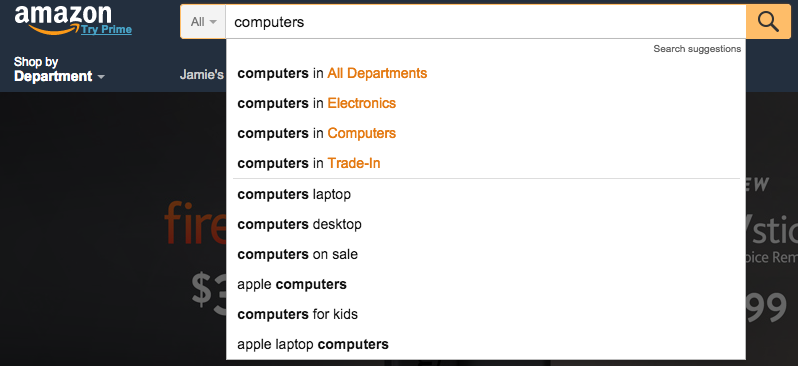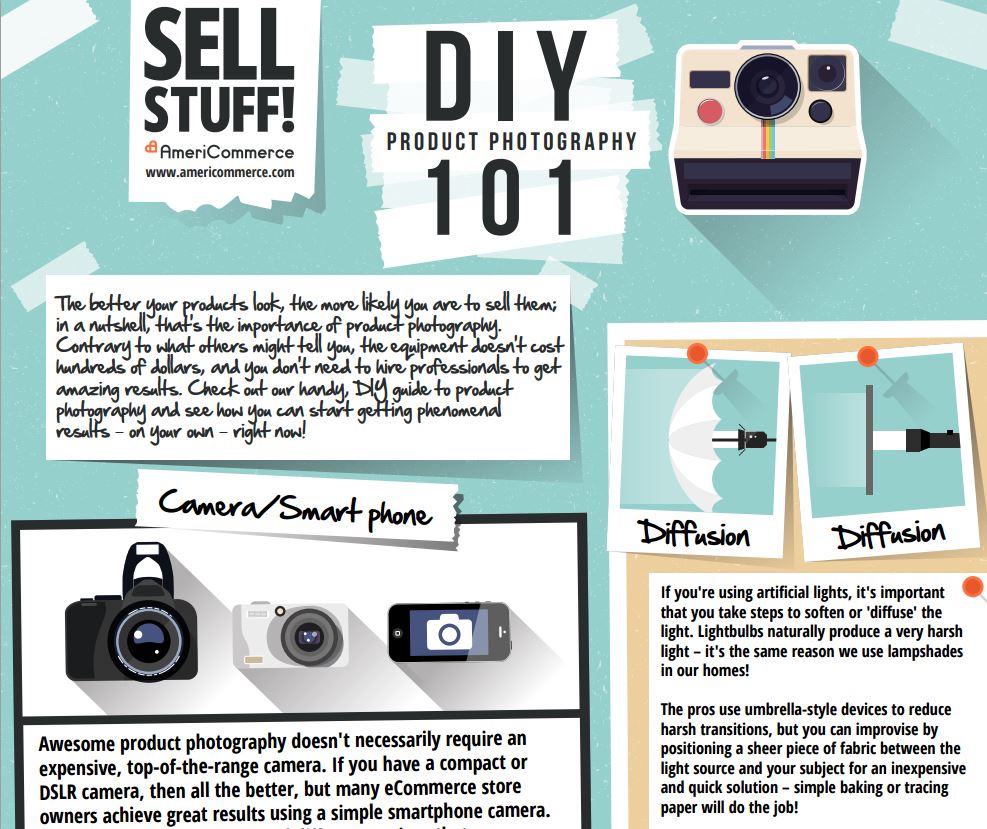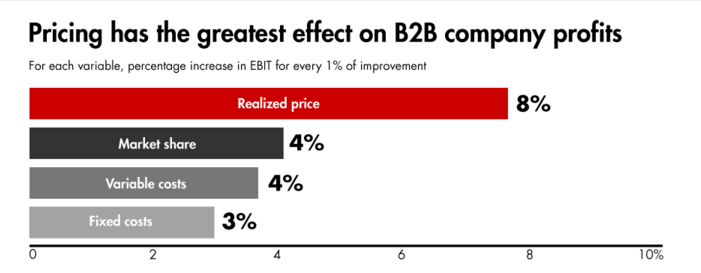Most people think of ecommerce as a fundamentally B2C industry.
The truth is B2B ecommerce is massively lucrative.
According to Internet Retailer’s 2015 Guide to B2B E-Commerce, B2B ecommerce is currently a $1 trillion industry that “many companies don't know exist.” That’s roughly four times the size of the B2C ecommerce marketplace.
Even more staggering, by the time we reach 2020, the B2B market is expected to reach $3.2 trillion.
Unfortunately, even companies that have their eyes open to the opportunities inherent in B2B ecommerce, get bogged down in the complexities.
As our own B2B page itself explains, “business execs need flexible pricing, higher volume order capabilities, complex shipping settings and variable secure logins. With more regulation, tax complexities, and the need for logistics solution, B2B Marketing is undoubtedly more complex than the B2C business model.”
That’s why, to save from getting lost in the complexities, we’re going to cover five best practices that overlap between B2B and B2C and five just for the B2B market.
B2B and B2C Ecommerce Best Practices
(1) Simple Navigation
The majority of the time, when you go online, your mission is to solve a problem.
And the truth is your customers and prospects are no different. In fact, 76% of consumers say the most important factor in a website’s design is that it’s “easy for me to find what I want.” In other words, your visitors approach your site with a need -- a very specific need -- as well as a specific solution in mind.
The worst thing you can do is let your navigation get in their way.
That’s why it’s extremely important to make your product offerings as accessible as possible by building glaringly obvious navigation features like product categories (most notably, hierarchies) and specific product filters. Thankfully, you can build these with little technical expertise simply by creating attributes and attribute groups.
I know it’s grim, but remember: if your visitors can’t find the information they’re looking for, or even find it fast enough, they’re going to leave and get what they’re looking for on your competitor’s site.
(2) Intuitive Search
Having an intuitive search process is all about making it even easier to find the information your prospect is looking for.
Autocompletion makes a user's information search experience exponentially better for them and more profitable for you. We all know how delightfully speedy the process of finding what you’re looking for on Amazon can be. Start typing in “computers” and almost a dozen product matches and images show up, already typed in for you.

Another way to make the search process more friendly is to use common product synonyms in your descriptions. Why? Because the English language is blessed with many different ways to say the same thing and you need to account for all of them in order to make sure your visitor finds the product, resource, or content they’re after.
Lastly, it’s important to serve the most relevant information to your prospect first. Make sure to rank search results by popularity to account for this, rather than serving them an alphabetic list with no clear information hierarchy or organization.
(3) High-Quality Product Images
Once you’ve made it exceptionally easy for your customers to find what they’re looking for, the next step to make sure what they actually see is exceptional too.
In order to do this, your product images must be high quality.
While this is often stressed in B2C ecommerce, it’s equally true for B2B. Visitor should not only be able to zoom in on what you’re selling and get as close to the “real-life” feel as possible. They also need to be able to view it in a variety of ways. This means using multiple images, from multiple angles, and in multiple settings … especially real-life settings.
The more your prospect understands about your product -- what it looks like, feels like, how big it is, how the colors actually look -- the more confident they’ll be with buying.
Your product images shouldn’t be stock. They should entice your leads. However, this doesn’t mean you’ll need hire a professional photography. The good news is our DIY Product Photography 101 walks you through the entire process of creating your own high-quality images.

(4) Multiple Shipping Options
When it comes to online sales, shipping options can make or break everything both in B2C and B2B.
Often overlooked, your store’s shipping options are one of the most influentials factors when it comes to purchase completion. In other words, having shipping options that appeal to your customers is essential to increasing your conversions.
Some customers will be influenced to convert based on discounted or free shipping. And offering free shipping once they reach a certain spend threshold can even help you sell more.
But not everyone cares about free shipping. Some people want their product faster and will pay extra for it. So having options here is a must.
When it comes to shipping and delivery, the most important thing to remember is being up front and clear. Customer are far more willing to wait if they understand the timeline of the process, have a delivery date, and can track their packages.
Lastly, adding options that give the customer added control -- i.e., special instructions like “please deliver after business hours” -- dramatically improves the customer experience and increase the likelihood of both positive reviews and repeat orders.
(5) Real-Time Product Availability
How often have you been prompted to make a purchase now rather than later because you saw that the product you wanted was down to its last two items?
Timing plays a huge role in both B2C and B2B ecommerce.
Not only does displaying product availability in real-time help increase purchase urgency, it even speeds up many decision-making delays that happen in B2B transactions.
Just ensure your availability is accurate and not a mere gimmick. Moreover, empowering the user with real-time product availability helps manage customer expectations and increase communication so that the transaction process goes smoothly.
What if you run out of a product? Instead of disabling the “Buy” button, create automated forms that prompt users to enter their email address to be notified when the product comes back in stock.
B2B Ecommerce Best Practices
(1) Multiple Storefronts
While there are clearly overlaps in B2B and B2C best practices, different audiences eventually call for different approaches … which is exactly what our first B2B best practice is all about.
As mentioned above, the problem many store owners face when marketing to both B2C and B2B or simply to multiple B2B audiences is complexity.
If you want to grow your business by appealing to multiple niches without being forced to create separate websites, then having multiple storefronts is the way to go.
It order to run multiple stores smoothly, you’ll need an ecommerce tool that can help you handle inventory, design, and management. And the key to success when duplicating anything is consistency. Using a centralized system that manages all of the inventory, shipping, site designs, and orders in one place is crucial to ensuring this kind of consistency across stores.
With AmeriCommerce’s multiple storefront option you can easily “leverage your investment of time, integrations, store settings, infrastructure and product catalog without sacrificing unique designs, capabilities, and customization.”
You can even target each of your specific audiences through unique SEO and testing.
(2) Flexible Payments
The more options you have for accepting payments, the better chances you have to close the sale.
However, when it comes to B2B, there are certain payment challenges that are unique.
For one thing, in B2B transactions, you’re often working with at least two or more decision makers. That means there is often the need to have purchase approval from multiple sources. All of these delay the speed at which you receive your money from the purchase.
This means you need to ensure your B2B stores is equipped with the ability to provide invoicing, purchase orders, checks, credit card options, and secure third party payment options like PayPal and Google Wallet.
Another payment option that many businesses experience success with is issuing clients a corporate account. This streamlined billing process works well because it allows the client to add multiple decision makers to the account itself, often with preset spending amounts. It also allows merchants to issue one bill at the end of the month instead of one-off orders.
(3) Wholesale Pricing
Having a backend optimized for both retail and wholesale transactions at a variety of order levels is nonnegotiable in B2B ecommerce.
So what do merchants need to ensure the process goes smoothly?
Key features include custom pricing options according to sales volume, custom logins for buyers (which make repeat orders easy and fast), custom pricing options based on login permissions, and the ability to restrict ordering access solely to account holders.
This can sound like a tall order, but using a Rewards / Loyalty Program dramatically simplifies this often cumbersome process by enabling you to creating customer-specific discounts, free shipping options based on order thresholds, and B2B coupons.
And let’s not overlook drop shipping, which can be good for the merchant and the supplier. Why? Because drop shipping saves you both the money of warehouse costs as well as the time of managing the shipping process.
(4) Custom Discounts
Pricing is the single most determinative factor of a B2B company’s profits. In fact, pricing is two times as determinative as gaining market share and just under three times as determinate as reducing fixed costs. That’s according to Bain & Company’s “Clearing the roadblocks to better B2B pricing”:

Image Credit: Forbes
Of course, pricing anything is difficult. But in the B2B space -- where volume, regulations, and complexity mount -- this difficulty only increases.
Naturally, not every prospective business has the same needs … or the same budget. To match this complexity, here’s a quick rundown of three keys ways to offer custom discounts:
- Introductory pricing for first time clients.
- Volume discounts to reward large purchases
- Legacy pricing to retain loyal customer
As Bain and Company point out, on the B2B front, discounting comes down to one word, discipline:
Disciplined discounting comes easier for companies when they create standardized criteria and a process for scoring and approving discount requests based on a deep understanding of customer lifetime value, rather than quarterly quotas or promises of strategically important deals.
(5) The Human Touch
People don't buy from businesses. People buy from people. Unfortunately, the human touch is often ignored in B2B ecommerce.
Remember the words of copywriting guru Joanna Weibe:
You’re not selling a product, a service, or a solution.
No matter the business you’re in and what you ship, it remains the same: you’re selling your prospects a better version of themselves.
Don't make the mistake of thinking that B2B cuts out customers. Instead, bring the human face to the B2B space.
The best way to capture this principle is to hone how you communicate. B2B prospects aren’t faceless organizations; they’re humans, and they want to have exchanges with other real humans.
That means replacing “business speak” with everyday words. Take a look at Forbes’ list of the Most Annoying Business Jargon and get ruthless. Cut out anything from your store that doesn’t genuinely sound like one human talking to another.
Better yet, use the words that your prospects are using. Henneke Duistermaat of Enchanting Marketing advocates stealing your messages from your prospects by mining their actual comments and reviews.
When you speak the language your prospects are using to explain the pain points that your solution solves, those are messages that resonate.
B2B Ecommerce
B2B ecommerce is the $1 trillion industry that “many companies don't know exist.” The opportunities for B2B success are massive.
And dominating that highly competitive (and complex) space comes down to just five best practices:
- Multiple storefronts
- Flexible payments
- Wholesale pricing
- Custom discounts
- The human touch
Are there any other best practices that you would add? We’d love to hear your thoughts in the comments.
